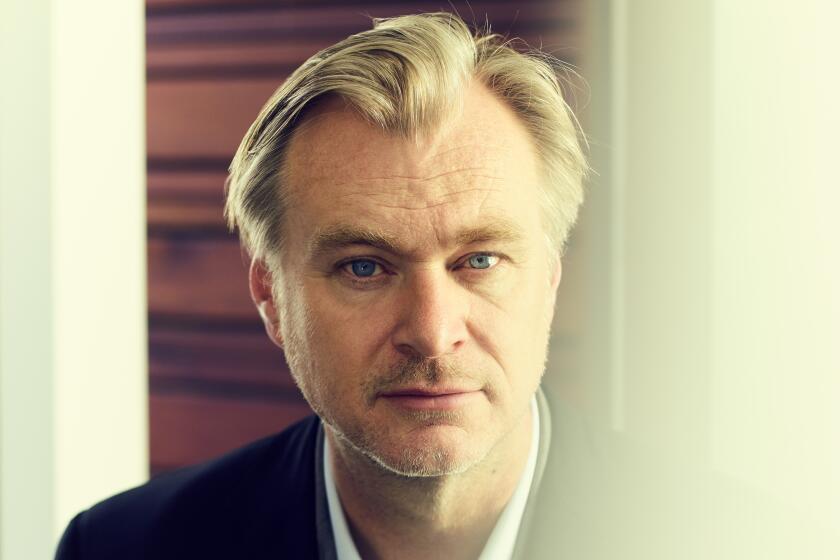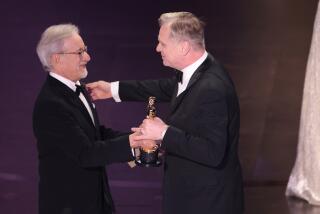How composer Ludwig Göransson channels J. Robert Oppenheimer and Christopher Nolan too
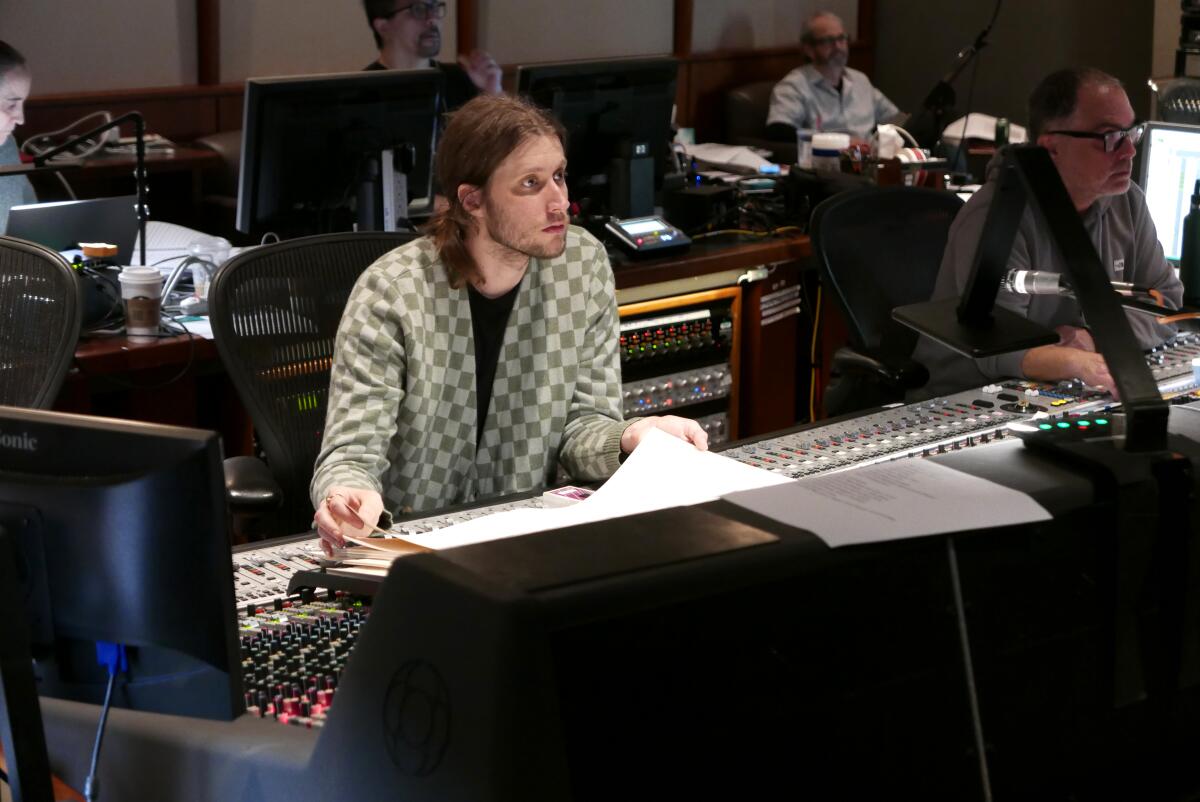
When it comes to music, Christopher Nolan is as fixated and fanatical as J. Robert Oppenheimer was about quantum mechanics. For his new film about the father of the atomic bomb, Nolan connected with composer Ludwig Göransson four months before he started production — meeting weekly, listening to the composer’s demos over and over and even introducing Göransson to the film’s visual effects team.
“I’ve always viewed the music as needing to be integrated early into the DNA of the film,” Nolan says, “and not applied afterwards, you know, like a sauce on a piece of meat.”
So Göransson — the Swedish wonder who has worked his aural magic on “Creed,” “Black Panther” and “The Mandalorian” — diligently wormed himself inside the headspace of not only Oppenheimer, but also Nolan. The results were intensely emotional and neurotic, fragile and contradictory.
The composer musically communicates the entropy and reverse entropy, and jaw-dropping action sequences of the Christopher Nolan film
“That’s what I got from reading the script,” says Göransson. “It’s first person. You’re in Oppenheimer’s mind. The audience needs to feel what he’s feeling. Like, not to judge him. They need to be inside of him, seeing it through his eyes.”
The composer latched onto the character’s melancholy and loneliness, and at Nolan’s suggestion he began exploring ideas with a solo violin — the most neurotic of instruments, according to Nolan. Göransson’s wife, Serena, is a professional session violinist, which meant the couple could work for hours in the studio coming up with tones, mostly for the simple, six-note Oppenheimer theme.
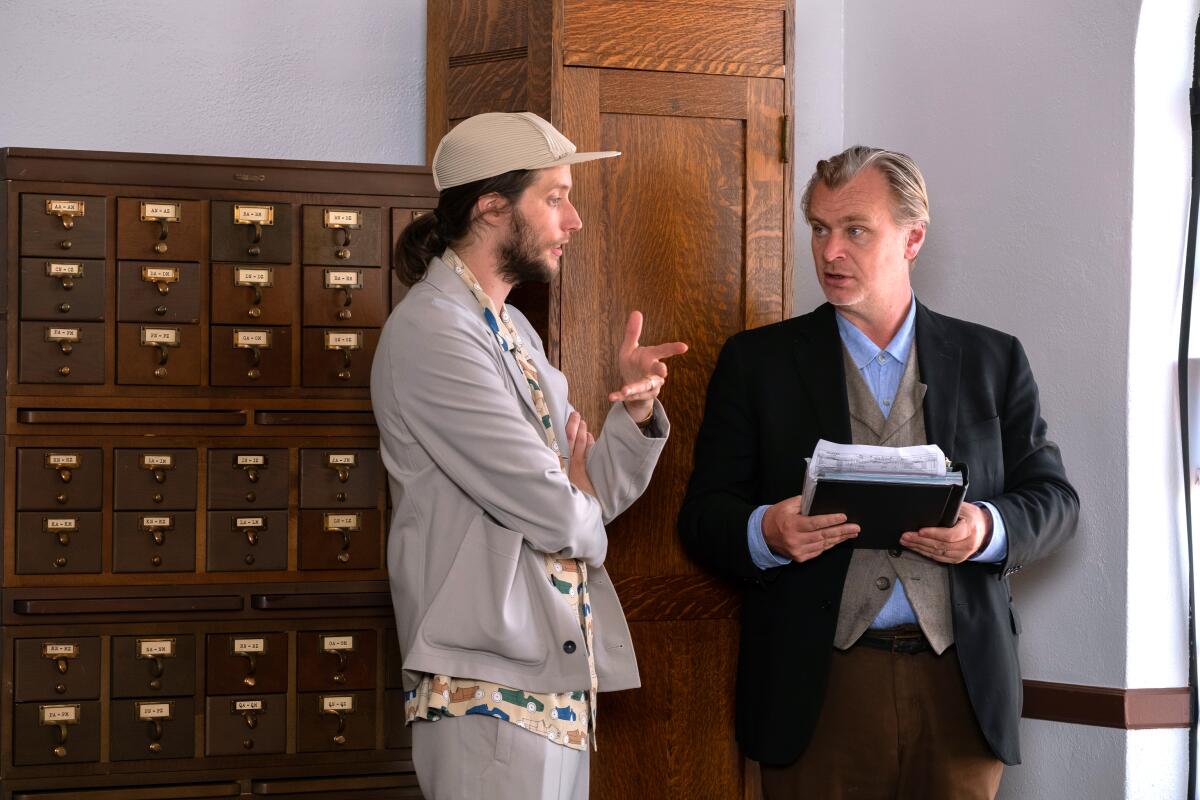
“The way that Serena performed it is a very fragile, intimate, vulnerable way of playing that theme,” says Göransson. “It’s really portraying the inner core of him.”
He also went searching for music that would capture “the energy of the brink of discovery.” In the film, a physicist tells Oppenheimer that science is like sheet music, then asks him: “Can you hear the music?” The subsequent montage needed to completely sell the idea that, yes, he can.
“My intention was to get this feeling of energy,” says Göransson, “like the atoms just swirling faster and faster and faster.”
To achieve that, he wrote a shimmering, swirling idea for strings and electronics that changes tempos 21 times within the same short piece of music. That required some unorthodox recording techniques and three days of sessions to get the feeling just right — the product of Göransson’s Oppenheimer-level obsession.
“What I learned on ‘Tenet’ with Ludwig is that he is never satisfied that he’s finished,” Nolan says. “He will revisit things that have been working extremely well and try something completely different.... He’ll take the film to the next level, and he’ll take the score to the next level. And that’s the sign of a truly great composer, I think: He’s never fully satisfied, never finished.”
Diving into an explosive episode of 20th century history that launched the nuclear age, director Christopher Nolan unleashes the most ambitious film of his career.
The score is as contradictory and complex as the film’s protagonist. It oscillates between the hypnotic but moody romance between Oppenheimer and Kitty (Emily Blunt), a confident and almost heroic anthem with synths as the scientist takes control of the Manhattan Project — suiting up in his hat and pipe like a kind of sheriff — and the frenzied, white-knuckle tension of the Trinity bomb test.
Nolan already had an abundance of Göransson’s music before he shot the film, and he would listen to it on the set, then lay it in as he started to edit the picture — “so that way his music is always being used as a fundamental part of the narrative, rather than decoration, a sort of window dressing,” the director says. “It’s essential to the narrative.”
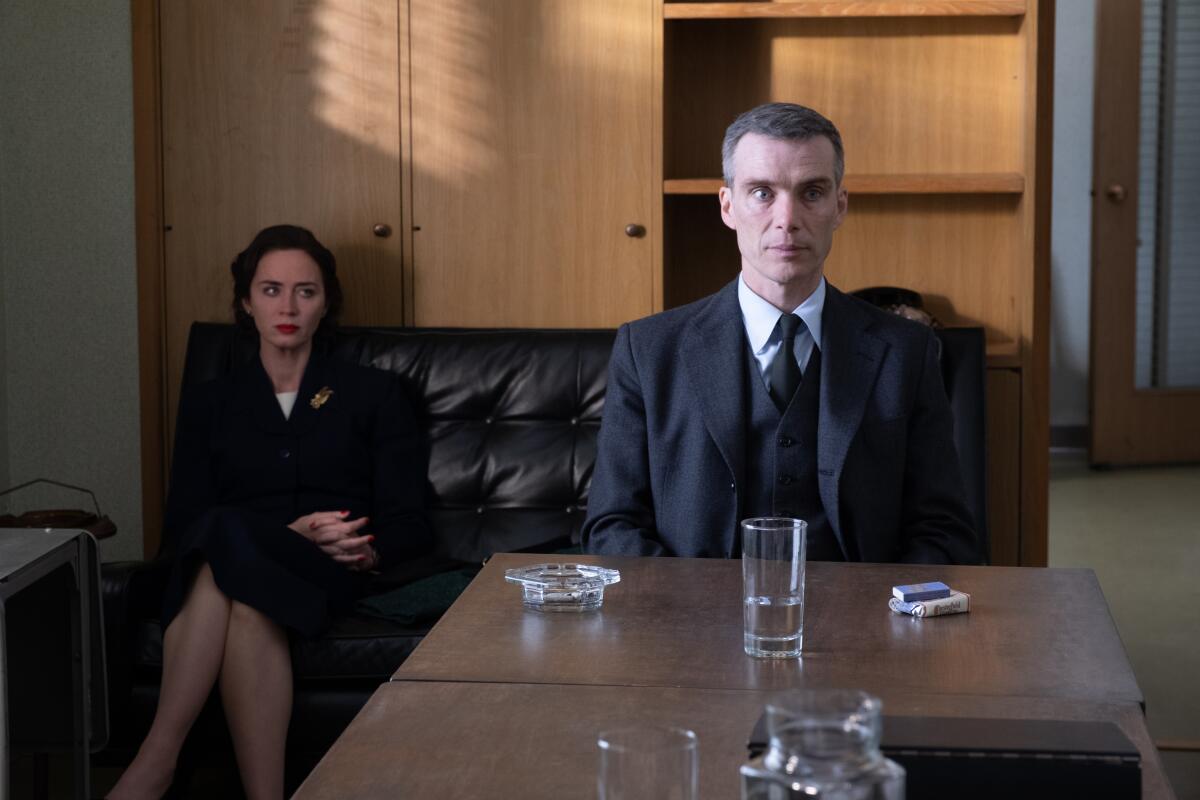
During the many months of editing, Göransson would screen the film every single Friday with Nolan and editor Jennifer Lame. Then it was a matter of either retaining his original demo’ed ideas, adding to or revising them, or rethinking some areas of the score entirely. When they got to the film’s third act, which concerns the security hearing Oppenheimer is subjected to by Lewis Strauss (Robert Downey Jr.), Göransson’s initial instincts didn’t seem to work.
“Chris was like, ‘I think we need to approach this last courtroom act as an action scene,’” says Göransson, “‘and use it almost like action music.’ So I wrote a 40-minute action cue.”
What otherwise might have felt like staid, black-and-white conversations in a small room, in Göransson’s hands became as thrilling and propulsive as one of Nolan’s daring, stunt-driven set pieces.
The music carries the entire three-hour film like a current, nearly always present, churning and rippling and rushing underneath Nolan’s montage-like flow of scenes already in progress.
“It does a lot of different things through the film,” says Nolan, “and tries to really give you an exhausting emotional experience of this individual whose experience goes from the highest highs to the lowest lows.”
More to Read
From the Oscars to the Emmys.
Get the Envelope newsletter for exclusive awards season coverage, behind-the-scenes stories from the Envelope podcast and columnist Glenn Whipp’s must-read analysis.
You may occasionally receive promotional content from the Los Angeles Times.
